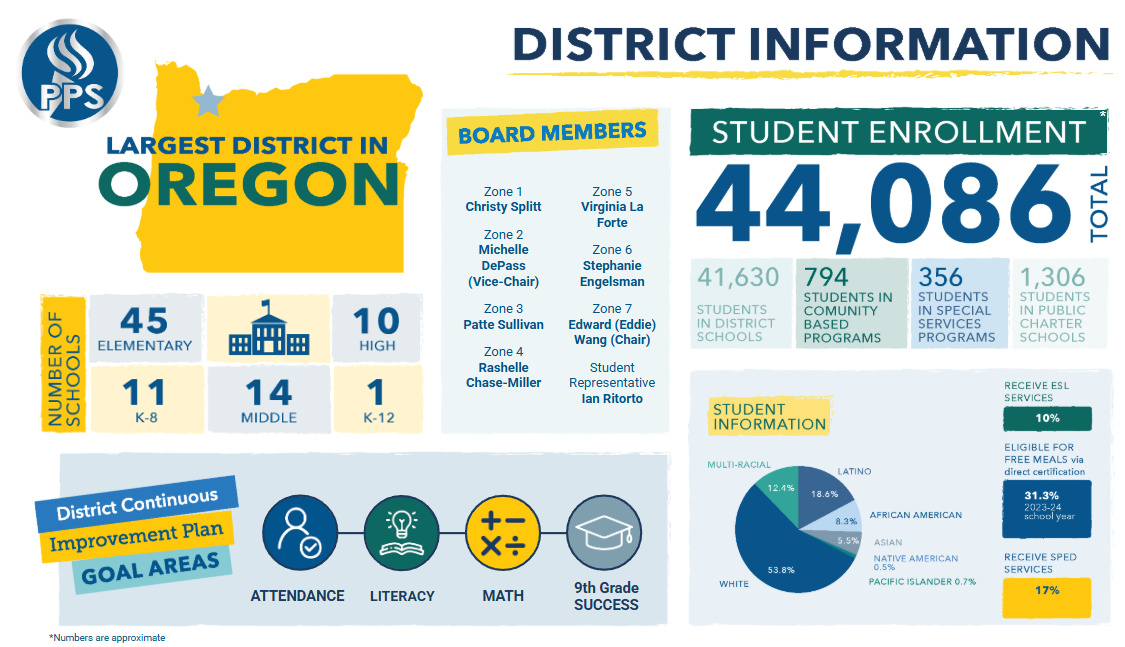Student attendance in Oregon has been dropping dramatically in the past few years, but recently has gotten even worse. According to the Oregon Capital Chronicle, 40% of Oregon students have missed at least three weeks of school in the 2022-23 academic year. The Oregonian also writes that approximately 200,000 students in Oregon have been considered absent or missing at least 10% of school days. 45% of Oregon kindergarteners miss school that often.
Being absent in school means students miss instruction and assignments, putting them at serious risk of falling behind. Alex Dawson, a social studies and physical education teacher at Mt. Tabor Middle School, says, “There is a direct correlation between attendance and learning/success in school. There is simply no way to know what is going on in class and how to do the things I am trying to get them to do unless they are there in person the vast majority of days.”
For older students in high school, missing class can set them up to be unable to graduate due to not passing classes or not having enough credits in order to graduate. According to The Oregonian, last school year 52% of seniors missed more than three weeks of school.
According to The Oregonian, Oregon’s chronic absenteeism rate has worsened by two full percentage points, from 36% in 2021-22, to 38% last year which is nearly twice pre-pandemic levels. Oregon is the first state to have an increase in absences since the pandemic. Dawson says he thinks the pandemic plays a large role in absenteeism. “People are either sick and are required to stay home more or are being more cautious as to avoid getting sick or spreading sickness,” Dawson continues. “I also think there was a rise in anxiety and other mental health barriers. We often discuss students in team meetings and we get word that a handful of chronically-absent students are avoiding school because of anxiety, stress, fear, etc.”
These are not the only reasons for the uptick in absences, according to Jamaal Tibbs, the Director of Student Learning and Family Engagement Department. Many families are facing housing and food insecurities, students are helping their families by taking on jobs, families lack transportation, and students may not feel safe at school or connected to staff, Tibbs says.
In other states, chronic absenteeism has declined since the pandemic. For example, in Massachusetts it declined by 5% in 2022-23, according to The Oregonian. The Department of Education mentions that chronic absenteeism in Michigan declined from 38.5% to 30.5%, even more than Massachusetts. In Connecticut, chronic absenteeism has declined to 20% in 2022-23 when it was 23.7% in 2021-22. A variety of news sources have also shown a decrease in chronic absenteeism in other states as well.
According to an article in The Oregonian, some of the most alarming decreases in attendance were in larger districts. A chart in this same article shows that the highest percentage of students who are chronically absent are in the Reynolds district, totalling at 51% of students who are considered chronically absent. The lowest rates of absenteeism are in Lake Oswego at 23%; Portland Public Schools is near the bottom compared to others, at 36%.
There are very few places in Oregon that have reduced their percentage of chronic absenteeism. In the Portland metro area, only the Banks School District in Washington County, Gladstone School District in Clackamas County, and Parkrose School District in Multnomah County were able to slightly increase the number of kids regularly attending school. All three of these are small districts that have between 1,000 and 2,800 students. Beaverton, North Clackamas, and Oregon City’s chronic absenteeism rates all rose by 6%.
Tibbs says it’s his second year learning about PPS attendance practices. “In my observation, I’ve determined that we must first develop a better foundation of understanding of how poor attendance impacts student educational outcomes negatively.” Tibbs also adds that he believes it is important to be holding more conversations about attendance, and work together to create an attendance action plan. He goes on to say, “That plan should identify who is responsible for what actions, understand the root causes, establish a positive attendance culture, communicate to all stakeholders the importance of attendance, norm attendance expectations and attendance taking practices classroom to classroom, collaborate with families to address the needs, and implement a tiered level of supports to address student attendance.”



































